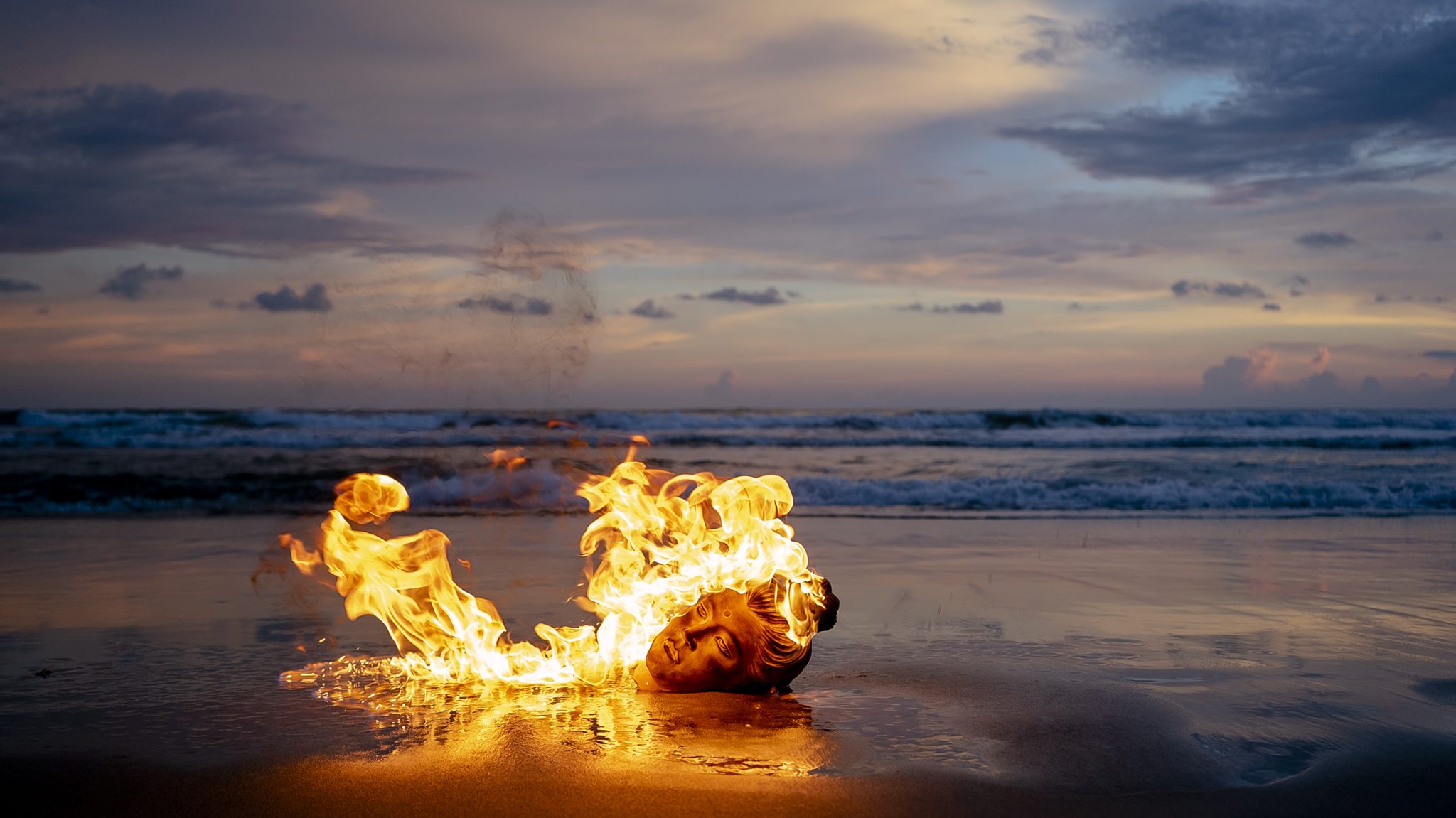Death and memory haunt a post-apocalyptic landscape in the Vietnamese-American artist’s latest film
“If you could talk to your ancestors and old people, what would you say?”
“I’d ask them about how they grew up in the desert and how they lived out there, and ask them about all the old stories about the country and all the old songs and the meanings behind the songs and the stories.”
That’s a conversation between two generations of the Ngurrara people that comes near the beginning of Tuan Andrew Nguyen’s 35-minute film We Were Lost in Our Country (2019), which made its debut at last year’s inaugural Sharjah Architecture Triennial. The film revolves around the creation of the Ngurrara Canvas II (1997), a collaborative artwork made by Ngurrara Elders that functions as a map, made from memory, of the territories, in what is now known as the Great Sandy Desert, that had been taken from their peoples, and from which
they had largely been displaced, during the extended colonisation of Australia. “Crown land?” one of the Aboriginal interviewees says at one point during the film. “The Queen never fucking walked round here.” The painting was subsequently used as evidence in a successful Native Title claim that restored the territory to the Ngurrara people ten years later. (Ngurrara means ‘country’ in Walmajarri.) But it’s a territory about which younger generations, on whom a lifetime of displacement, poverty, alcoholism and suicide (in 2014 it was reported that Aboriginal peoples were six times more likely to commit suicide than non-Aboriginal peoples; 80 percent of those who committed suicide in 2011 were aged between eighteen and twenty-four) have taken their toll, often have no memory. “I didn’t know we came from the desert,” says another interviewee. “See, I grew up in a town.”
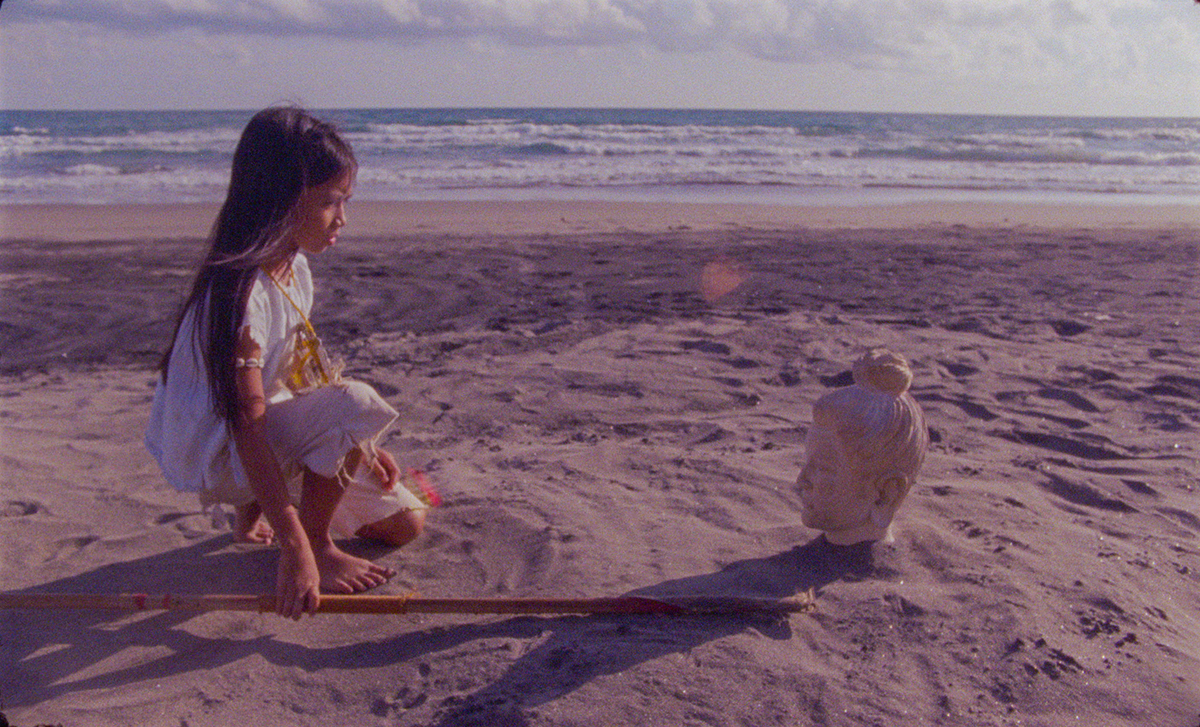
Nguyen’s film goes on to trace the often-fragile operations of memory and belonging, and their opposites, and to explore the ways in which a country and a culture might be recovered, rebuilt and reclaimed. And, of course, it’s about the role that art – both his own and that of the Ngurrara Canvas painters – can play in making these things visible. “To people it may look as if it’s a piece of very good art,” says one of the Ngurrara people, “but it is also more than a painting, it’s our life.”
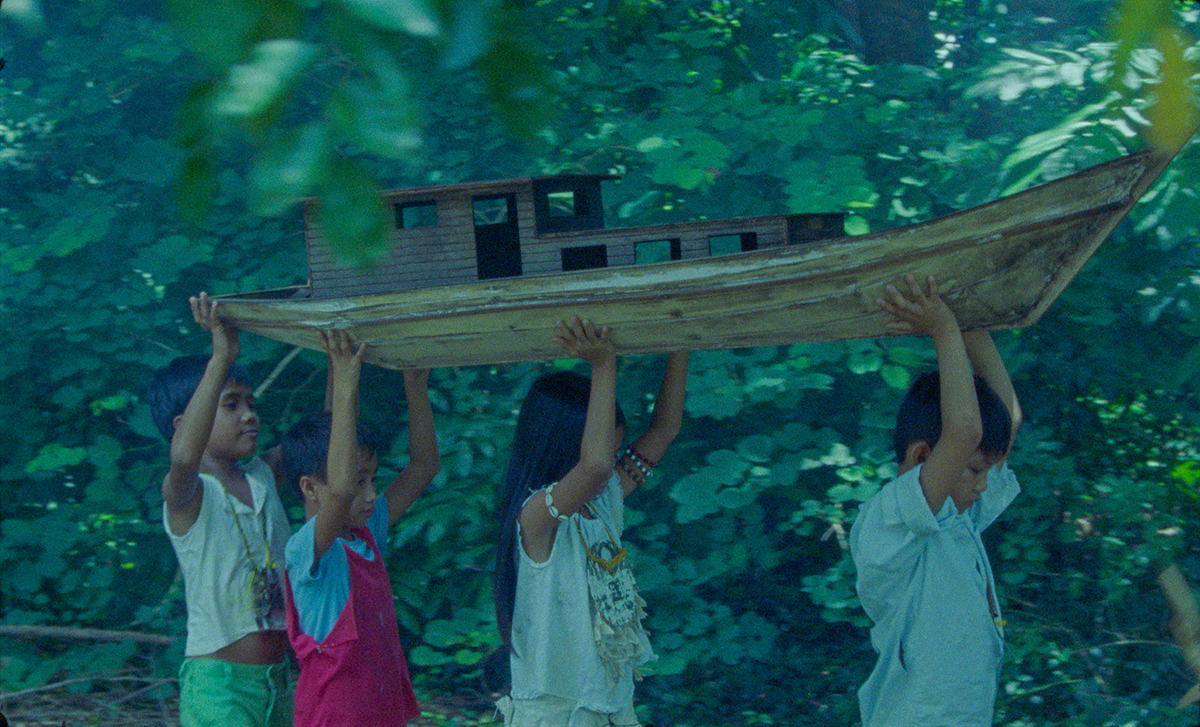
Nguyen was born in Sài Gòn (as it was then named), grew up and studied in the US (graduating with an MFA from Cal Arts) and is currently based back in Ho Chi Minh City. In some respects, his latest film, The Boat People, which made its debut at James Cohan gallery in New York this March, shortly before the gallery and the rest of the city shut down as a result of the COVID-19 pandemic, is a follow-up to We Were Lost in Our Country. Created as part of a residency at Bellas Artes Projects in Bataan, a province on the Philippine island of Luzon, it brings together a collection of existing ruins, monuments, museum displays and memorials from the area and asks what they might tell future generations. In it, a group of five young children, possibly the last survivors of the human race, sail the world looking for objects that might tell them about a world that has been lost in the wake of an unspecified cataclysm. What they find, when they come ashore in Bataan are commemorations of migration, death and variously framed promises of an afterlife. A place where past, present and future are one.
The children arrive on the island dressed in the kind of homemade costumes that are reminiscent of postapocalyptic movies such as Mad Max (1979) or Waterworld (1995). In a line that could have come straight out of We Were Lost in Our Country, their leader, the only girl in the group, explains that they are “seeking the stories of our ancestors, of who we once were”.
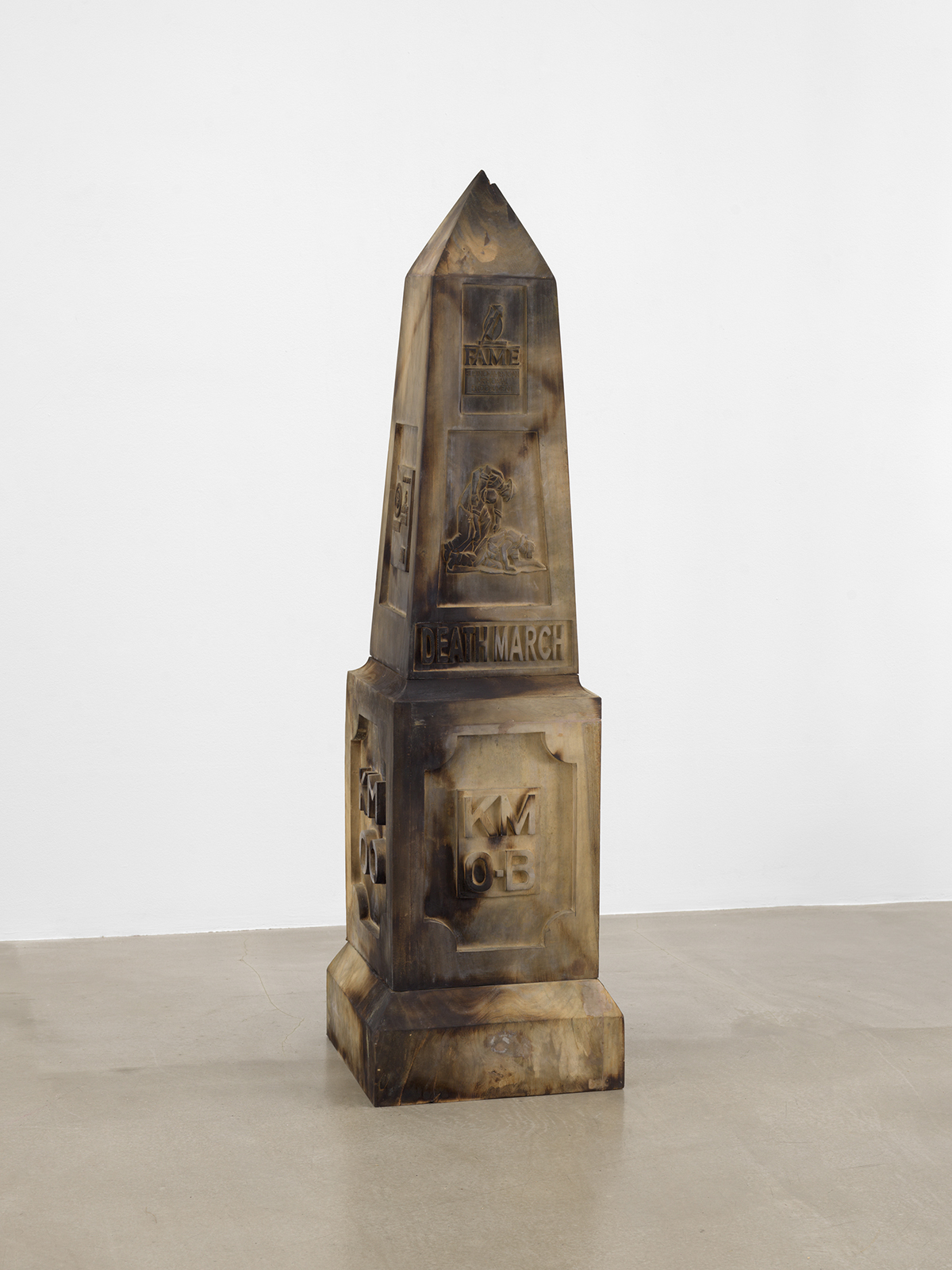
They enter the Philippine Refugee Processing Center, near Morong, which opened in 1980 to prepare refugees from Cambodia, Laos and Vietnam for life in Europe, North America and Australia, and was gradually abandoned during the early 1990s due to a lack of funding and a decline in refugees. They pass a broken memorial constructed by Lao refugees in 1988, a Khmer monument in the form of an overgrown miniature Angkor Wat marking the four cardinal points and crumbing reconstructions of the twelfth-century Bayon face-towers from Angkor Thom. There are seated Buddhas, a broken-fingered Guan Yin and numerous statues of the Virgin Mary littering the landscape. And a lifesize monument to Pope John Paul II commemorating his visit to the refugee centre in 1981, unveiled shortly after his canonisation in 2011. During the mid-1990s the Philippine government designated Morong a special economic zone and founded the Bataan Technology Park as they tried to reclaim the former processing centre from the jungle. But the context surrounding the sculptures, temples and monuments are something of which the children and the viewers who follow them are unaware.
They pass street signs – Plutonium Avenue, Krypton Street – from the Bataan Nuclear Power Plant, the controversial construction of which began in 1976 and was abandoned, after completion (at a cost of more than $2.3 billion) but before fuelling, in 1986, following the overthrow of President Ferdinand Marcos and the Chernobyl nuclear disaster. Among other things, the plant has been mired in corruption claims, was built near a geological fault line and what was thought to be a dormant volcano, Mount Pinatubo, which erupted in 1991. Plans to revive the plant are ongoing. But while the street signs may express elements of Bataan’s past, present and future, here the signs, like the monuments, merely add to the postapocalyptic feel. It’s a set for a movie that no one can quite recall.
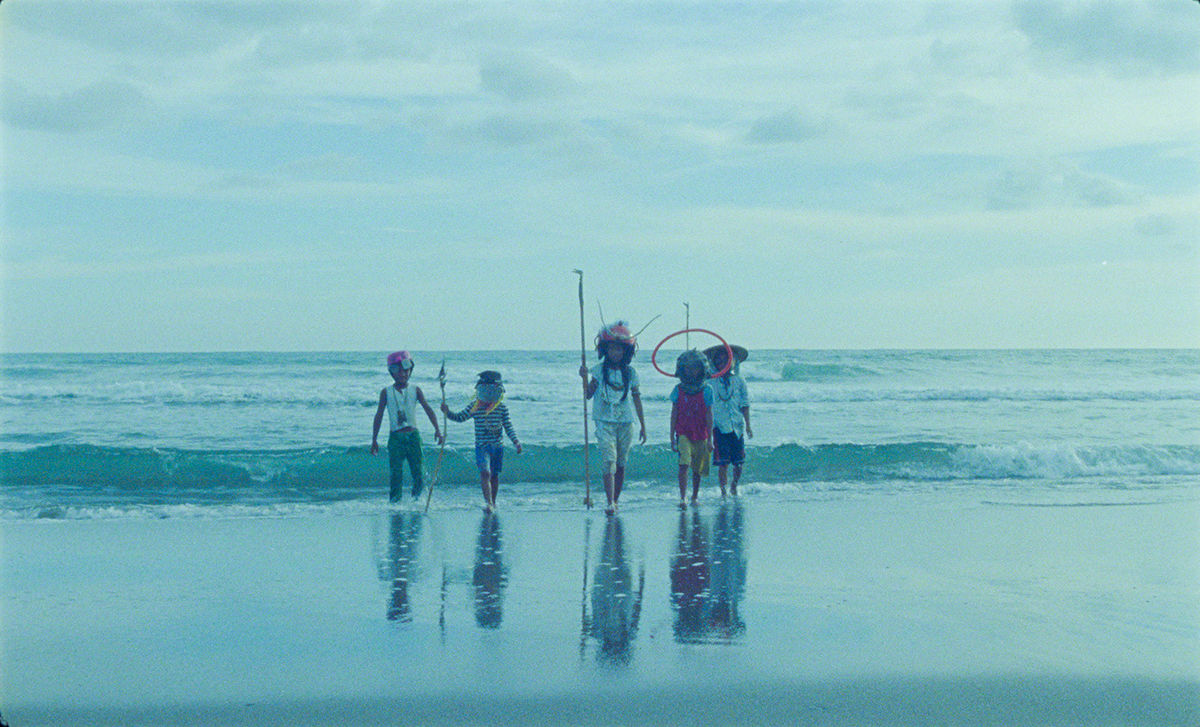
“I’ve found many places,” says the girl as the group passes, by boat, through a system of canals that evoke Venice. It’s not clear whether she means just here or while voyaging around the world. The canals are part of Las Casas Filipinas de Acuzar (where the Belles Artes residency is located), a 400-hectare heritage resort in Bataan. They linger at the Mount Samat National Shrine, the site of the last stronghold of Philippine and us forces during the 1942 Battle of Bataan before they surrendered to the Japanese, marking the largest single surrender of soldiers in us history. Although the US preferred to remember the events surrounding and following the defeat rather differently, as a glorious tale of redemption and liberation in the form of a 1945 John Wayne vehicle titled Back to Bataan. They pass a memorial to the Bataan Death March, during which 500–650 US and 5,000–18,000 Filipino prisoners are estimated to have died. It looks like little more than a mile marker. Part of a bewildering landscape that remembers the invasions, incursions and forced migration of people from other lands. Whose museum displays include Japanese and guerrilla armaments, a fishing boat that crashed onto the shore of Bataan in 1981, carrying 65 Vietnamese men, women and children, a reconstruction of the processing centre’s prison (dubbed ‘The Monkey House’) and traces of the English lessons it used to provide to its residents (among them a sign reading, ‘I’m Sorry I Can’t Cash Your Check’). It is also home to a lot of graves. As the monuments and memorials pile up, it becomes hard to untangle them all, to trace a single particular heritage, other than death. Even for those who know the history of this place. The memorials collectively grow but are singly incomplete.

At a certain point the girl comes across the head of a statue lying on a sandy beach and begins to converse with it. She is speaking Tagalog, and the head, oscillating between its carved-wood state and that of an actual human head, as if flickering in and out of life, is speaking English. As if to suggest that monuments need people and can neither stand alone or completely in their place. The conversation drifts into existential territory and, prompted by the girl, the head, which resembles that of a Buddha, describes its function: “I’m at the service of human memory, a stand-in for someone, that in turn was a stand-in for something else.” As the conversations turn to the nature of gods (a human invention), it goes on to expand “Unlike humans, I was made to serve a purpose, but I am also dead.” The girl explains that the boat people don’t take the objects they find, but recreate them in wood in order to burn them, “to set them free”. As if memory can be both a trap and a release. ‘I wonder if we are stuck in bad movie plots we make ourselves,’ wrote Filipina novelist Gina Apostol in Insurrecto, a 2018 novel about history and its reenactment in her native country. The girl, it seems, agrees.
